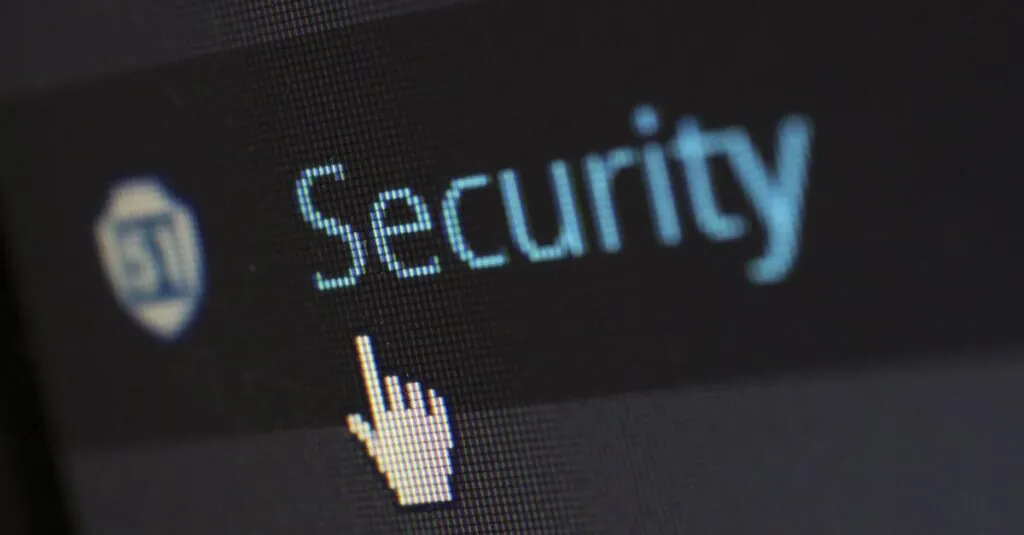Table of Contents
ToggleIn a world where cyber threats lurk around every digital corner, securing online accounts is more important than ever. Enter two-factor authentication, or 2FA, the superhero of account security. It’s like adding a second lock to your front door—because who wouldn’t want an extra layer of protection against those pesky hackers?
Understanding Two-Factor Authentication
Two-factor authentication (2FA) adds an essential layer of security for online accounts. By requiring two forms of verification, it significantly reduces the risk of unauthorized access.
What Is Two-Factor Authentication?
Two-factor authentication involves using two distinct methods to verify a user’s identity. The first factor usually involves something the user knows, like a password. The second factor could be something the user possesses, such as a smartphone that receives a verification code. This dual approach enhances security by ensuring that knowing the password alone doesn’t grant access.
Why Is It Important?
Two-factor authentication plays a crucial role in protecting personal and sensitive information. Cyber threats continue to evolve, with unauthorized access incidents rising significantly. Utilizing 2FA mitigates the risk associated with stolen passwords, making accounts less vulnerable to hacking attempts. When 2FA is in place, even if a password is compromised, the account remains secure without the second authentication factor.
How to Enable Two-Factor Authentication on Major Platforms
Enabling two-factor authentication (2FA) on various platforms enhances account security. Here’s how to activate 2FA on popular services.
Enabling on Google Accounts
To enable 2FA on Google accounts, access the Google Account settings. Select “Security” from the menu. Find the “Signing in to Google” section, then click “2-Step Verification.” Follow the prompts to set up 2FA using a phone number or authentication app. Google sends a verification code to your device during sign-in. Log in with your password, enter the code, and complete the configuration.
Enabling on Facebook Accounts
Facebook accounts can secure themselves through 2FA setup. Navigate to “Settings & Privacy,” then select “Settings.” Click “Security and Login.” There, find “Two-Factor Authentication” and select “Edit.” Choose your preferred method, such as text messages or an authentication app. Upon enabling, Facebook prompts verification codes during login, ensuring account protection with every access attempt.
Enabling on Twitter Accounts
Activating 2FA on Twitter is straightforward. Access your account settings by clicking on “Settings and Privacy.” Select “Security and Account Access,” then click “Security.” Choose “Two-Factor Authentication” and select a method, either through your phone number or an authentication app. After setup, Twitter requires a verification code when logging in, increasing account security and reducing unauthorized access risks.
Enabling on Online Banking Accounts
Most online banking platforms support 2FA activation. Log into your banking account and locate the security settings. Look for options related to “Two-Factor Authentication” or “Enhanced Security.” Follow specific bank instructions to set up 2FA using SMS, email, or an authenticator app. This feature demands a second verification step when accessing banking information, thus securing sensitive account data from potential threats.
Best Practices for Two-Factor Authentication
Employing two-factor authentication offers enhanced security. Following certain best practices can maximize its effectiveness.
Choosing the Right Method
Selecting the appropriate method for 2FA significantly impacts security. Users often prefer authentication apps like Google Authenticator or Authy due to their reliability and offline capabilities. SMS-based authentication remains common; however, it poses vulnerabilities like interception. Hardware tokens also provide strong protection; devices such as YubiKey are user-friendly and difficult to compromise. Verifying identity through biometric options, like fingerprints or facial recognition, adds an extra layer of security. Opting for a method that best fits individual needs enhances account protection.
Keeping Backup Codes Secure
Securing backup codes is crucial for account access during emergencies. Users receive backup codes during the setup of 2FA; they serve as alternate access methods if the primary 2FA method fails. Storing these codes in a password manager increases their security and accessibility. Users should avoid writing them down in easily accessible locations. If physical copies are necessary, keeping them in a safe place, such as a locked drawer, is advisable. Regularly reviewing and updating backup codes helps maintain account security and prevents unauthorized access.
Common Issues and Troubleshooting Tips
Many users experience challenges while setting up or using two-factor authentication. Understanding common issues and their solutions can streamline the process.
Problems with Authentication Apps
Authentication apps may sometimes malfunction or fail to deliver codes. Users might encounter delays or misconfigurations in the app settings. Regularly updating the app ensures it works optimally. Time synchronization issues can also lead to incorrect codes, so checking device time settings is crucial. Users should verify their account setup to confirm the codes generated match what’s required for access.
Recovering Access to Accounts
Recovering access after losing a device or authentication method poses specific challenges. Utilizing backup codes is essential, as these provide a reliable way in when primary options fail. Most platforms offer recovery options via email or alternate phone numbers linked to the account. Contacting customer support can also assist in regaining access quickly. Users should document recovery steps beforehand, ensuring they have multiple ways to secure their accounts if issues arise.
Conclusion
Enabling two-factor authentication is a crucial step toward safeguarding online accounts. By implementing this extra layer of security users can significantly reduce the risk of unauthorized access. Whether it’s through authentication apps hardware tokens or biometric options the choice of method can enhance protection even further.
It’s essential to follow the specific setup instructions for each platform and to keep backup codes secure. Regularly reviewing security settings and updating recovery options ensures continued safety. As cyber threats evolve staying proactive with security measures like 2FA is more important than ever.




